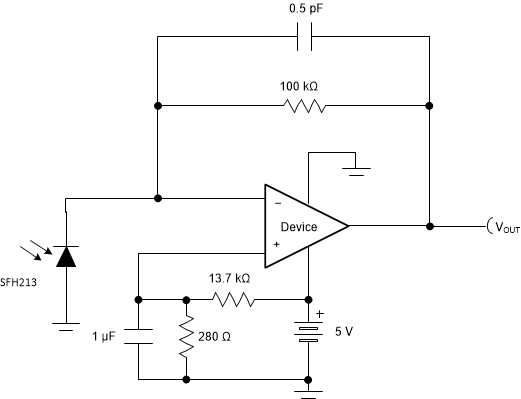ZHCSJD6 February 2019 OPA2356-EP
PRODUCTION DATA.
- 1 特性
- 2 应用
- 3 说明
- 4 修订历史记录
- 5 Pin Configuration and Functions
- 6 Specifications
- 7 Detailed Description
- 8 Application and Implementation
- 9 Power Supply Recommendations
- 10Layout
- 11器件和文档支持
- 12机械、封装和可订购信息
8.2.1.2.2 OPA2356-EP Design Procedure
To achieve a maximally-flat, second-order Butterworth frequency response, the feedback pole must be set to:
Equation 1. 

Use Equation 2 to calculate the bandwidth.
Equation 2. 

For single-supply applications, the +INx input can be biased with a positive DC voltage to allow the output to reach true zero when the photodiode is not exposed to any light, and respond without the added delay that results from coming out of the negative rail; this configuration is shown in Figure 31. This bias voltage appears across the photodiode, providing a reverse bias for faster operation.
 Figure 31. Single-Supply Transimpedance Amplifier
Figure 31. Single-Supply Transimpedance Amplifier For additional information, see the Compensate transimpedance amplifiers intuitively application report.